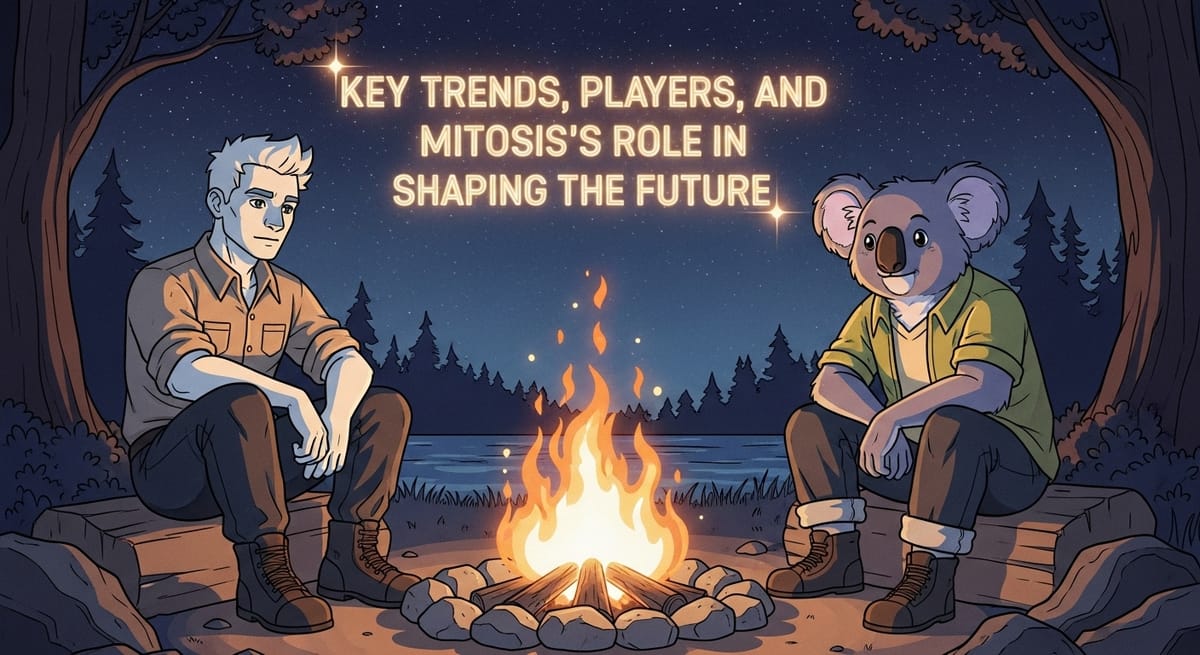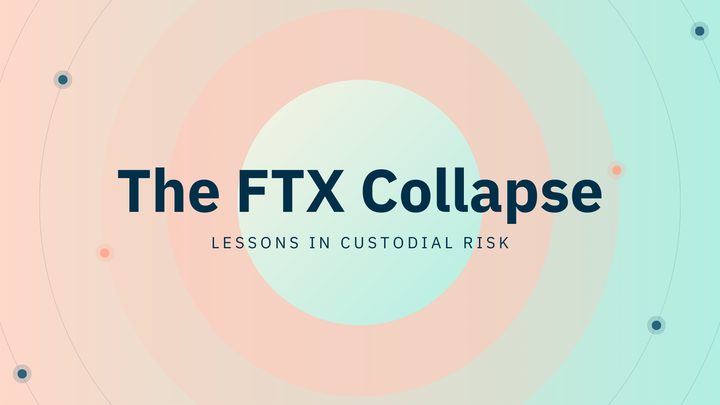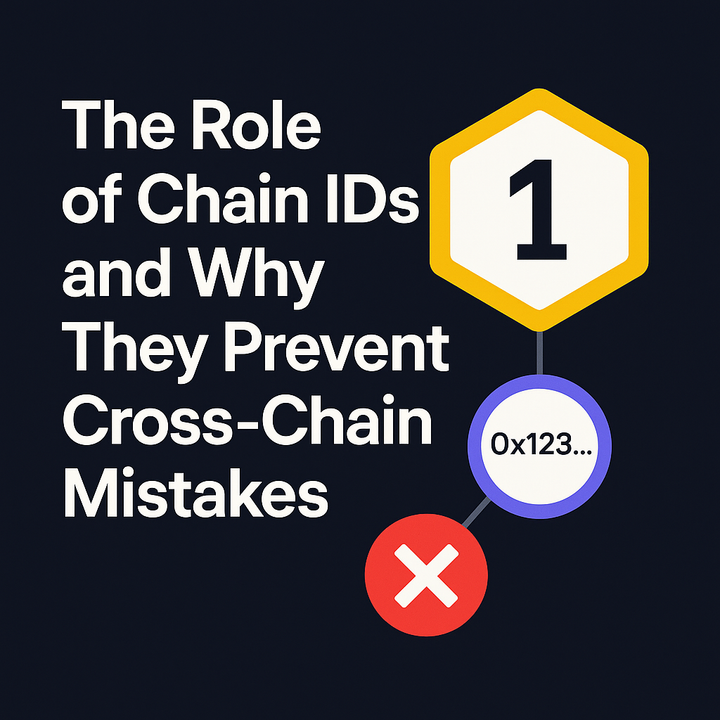The State of Interoperability in 2025: Key Trends, Players, and Mitosis's Role in Shaping the Future

1. Introduction: From "If" to "How" – Interoperability as the New Norm
Just a few years ago, the idea of seamless interaction between different blockchains seemed more like science fiction than a practical reality. Discussions were held at the level of "if": "If only we could move assets between Ethereum and Solana..." Today, in 2025, the question has fundamentally changed. It now sounds like "how": "How do we make this interaction as secure, cheap, and convenient as possible?"
Interoperability has ceased to be a niche problem and has transformed into a fundamental infrastructure layer for all of Web3. The growth of Layer 2 ecosystems, modular blockchains, and specialized appchains has made it clear that the future is multichain. And in this future, protocols that provide connectivity play a key role.
However, the interoperability space itself has become incredibly complex and competitive. Dozens of approaches and projects have emerged, each with its own trade-offs and advantages. The goal of this article is to provide an overview of the current state of affairs in this crucial field, highlight key trends, and understand the place Mitosis occupies in this landscape.
The Main Technological Trends Defining Interoperability in 2025
To understand where the market is headed, we must first look at the technologies shaping it. Today, several key trends can be identified:
- Maturation of ZK (Zero-Knowledge) Technologies: ZK-rollups and ZK-bridges are no longer experimental. Projects like zkSync, Polygon zkEVM, StarkNet, and Scroll are actively developing, offering high performance and security based on mathematical proofs. ZK-bridges promise the highest level of security (trust minimization) but still face challenges in cost and implementation complexity.
- Growth of the Restaking and AVS (Actively Validated Services) Ecosystem: EigenLayer has changed the game by allowing Ethereum's economic security to be borrowed to secure other protocols. For cross-chain, this means the emergence of bridges and messaging protocols secured by billions of dollars in restaked ETH. This creates a powerful alternative to both bridges with their own validators and more centralized solutions.
- Standardization of Messaging Protocols: Instead of everyone building their own bridge from scratch, the industry is moving towards using universal messaging protocols (such as Hyperlane, LayerZero, Wormhole, Chainlink CCIP). These protocols serve as a base "transport layer" on which specific applications (token bridges, cross-chain DAOs, etc.) can be built.
- Focus on Modularity and Flexibility: Projects are striving to create modular solutions where security, speed, and other parameters can be configured depending on the needs of a specific application.
These technological shifts directly influence what interoperability will look like tomorrow.
Key Challenges That Still Require Solutions
Despite enormous progress, the industry still faces a number of unresolved problems:
- Liquidity Fragmentation: Paradoxically, the emergence of many bridges and L2 networks has only exacerbated this problem. Now, liquidity for the same asset (e.g., USDC) is fragmented not only between L1s but also between different bridges and their "wrapped" versions (USDC.e, USDC.axl, etc.).
- Terrible User Experience (UX): For the end-user, the cross-chain world is still a complex labyrinth. Choosing the right bridge, managing different token versions, and paying gas on different networks all create huge barriers.
- Hidden Security Risks: Despite new technologies, the complexity of systems is growing, and with it, the potential attack vectors. It's difficult for a user to assess the real security level of any given bridge.
What Will You Learn From This Article?
In this article, we will analyze the current interoperability landscape to understand how Mitosis fits into the bigger picture:
- We will look at the main market players and their approaches in the context of current technological trends.
- We will analyze how the unique combination of technologies in Mitosis (specifically EOL and AVS-based security) directly addresses the unresolved problems of liquidity fragmentation and security.
- We will discuss the role Mitosis plays in shaping a future where cross-chain interactions become not only possible but truly simple, secure, and efficient.
We will show that in the complex and competitive environment of 2025, Mitosis offers not just "another" solution, but a comprehensive approach aimed at solving the most pressing problems of Web3 users and developers.
2. Mitosis's Positioning in the 2025 Interoperability Landscape
Having analyzed the key trends and unresolved problems in the interoperability space, we can clearly define the place Mitosis occupies in this complex landscape and how its unique approach addresses current challenges.
The Main Players and Their Approaches
In the 2025 interoperability market, several categories of players can be distinguished:
- Universal Messaging Protocols (LayerZero, Wormhole, CCIP): Their main task is to provide developers with infrastructure for sending any data between networks. They do not manage liquidity directly, leaving it to applications built on top of them (e.g., the Stargate bridge on LayerZero). Their strength lies in their universality and network effects for developers.
- Solutions Based on L2 Technologies (ZK-bridges, Optimistic bridges): These are bridges whose security is closely tied to the technology of the underlying rollup. They promise a high level of security (especially ZK) but are often limited to interaction between L1 and their L2, or between L2s of the same type.
- Specialized Solutions and Aggregators: Projects that either focus on specific niches (e.g., bridges for the Cosmos ecosystem via IBC) or aggregate routes across multiple existing bridges to find the best rate for the user.
Mitosis's Unique Proposition: A Synthesis of Security and Liquidity
Mitosis does not fit neatly into any of these categories. It offers a hybrid, comprehensive approach that takes the best from several worlds and directly addresses the main unresolved problems – security and liquidity fragmentation.
- The Answer to the Security Problem:
- While many protocols rely on their own validator sets or more user-intensive optimistic checks, Mitosis bets on the cryptoeconomic security of EigenLayer AVS. This allows it to stand out by offering users and developers one of the highest and most understandable security standards on the market, backed by billions of dollars of Ethereum stake.
- The Answer to the Liquidity Fragmentation Problem:
- This is the key difference between Mitosis and universal messaging protocols. Instead of just passing "empty" messages, Mitosis actively manages Ecosystem-Owned Liquidity (EOL). This allows it to:
- Combat wrapped token fragmentation: Mitosis can provide a native or canonical version of an asset on the destination chain, saving users from having to deal with dozens of different versions of USDC.
- Ensure deep liquidity: Where other bridges might suffer from a lack of liquidity for large trades, Mitosis's EOL can provide the necessary "fuel."
- Improve UX: Having its own liquidity allows Mitosis to ensure faster and more predictable transaction execution.
- This is the key difference between Mitosis and universal messaging protocols. Instead of just passing "empty" messages, Mitosis actively manages Ecosystem-Owned Liquidity (EOL). This allows it to:
Mitosis's Role in Shaping the Future
In the context of 2025 trends, Mitosis occupies a unique position. It doesn't just follow trends; it combines them to create synergy:
- It leverages the restaking trend (AVS) to provide top-tier security.
- It uses the standardization of messaging protocols (e.g., Hyperlane) as an efficient and flexible transport layer.
- It directly solves the liquidity problem that other messaging protocols leave to dApps.
Thus, Mitosis positions itself not just as a "bridge" or a "messaging protocol," but as an integrated cross-chain liquidity protocol. Its ideal user is not only someone who needs to transfer data but someone who needs to efficiently and securely move value.
Conclusion: From a Fragmented Present to a Unified Future
The interoperability landscape in 2025 is complex, dynamic, and full of trade-offs. There is no single "perfect" solution for all tasks. ZK technologies promise a revolution in security but are still on the path to maturity. Universal messaging protocols provide flexibility but do not solve the liquidity problem.
Against this backdrop, Mitosis offers a pragmatic and powerful approach. It takes the most advanced and proven security technologies available today (EigenLayer AVS) and combines them with an innovative economic model (EOL) that directly targets the most acute problem for users and DeFi protocols – liquidity fragmentation.
Mitosis does not try to compete with ZK-bridges in the realm of mathematical trust minimization. Instead, it offers an extremely high and understandable level of economic security, available today. It does not try to be just a universal "postman" like messaging protocols. It takes on the more complex task of being both a reliable postal service and a central bank of liquidity for that service.
It is this comprehensive approach to solving real user problems that makes Mitosis one of the most interesting and strategically important projects in the interoperability space today. It is building not just technology for technology's sake, but a foundation for a more connected, liquid, and secure Web3.
Learn more about Mitosis:
- Explore details on the official website: https://www.mitosis.org/
- Follow announcements on Twitter: https://twitter.com/MitosisOrg
- Participate in discussions on Discord: https://discord.com/invite/mitosis
- Read articles and updates on Medium: https://medium.com/mitosisorg
- Blog: https://blog.mitosis.org/



Comments ()